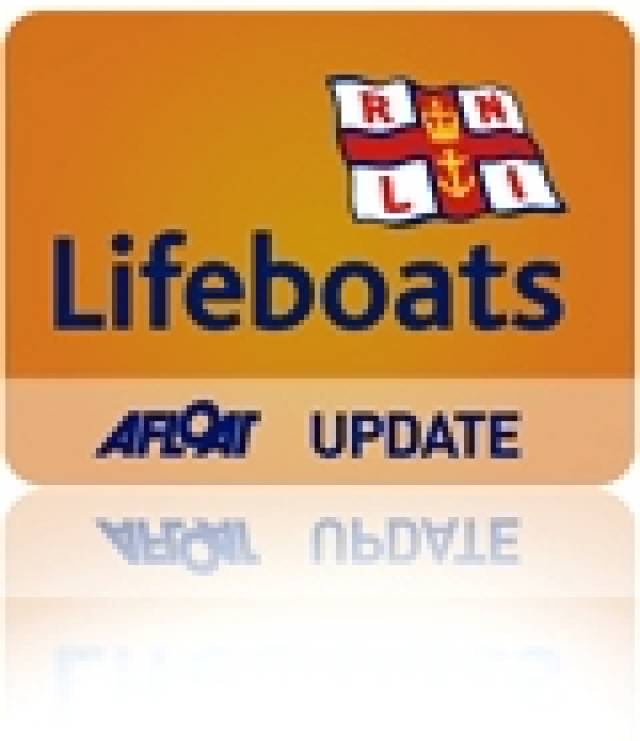#rnli – Howth RNLI have had four call outs over the course of Sunday and Monday this week. Three of the calls were to incidents at Malahide with the fourth being local to Balscadden Bay in Howth.
At 0820 on Sunday morning Howth RNLI's Inshore Lifeboat were tasked along with Rescue 116 when three males in there late 20s were attempting to swim from the Donabate side of Malahide harbour back to the marina. One male got into difficulty and his friend managed to get him to a nearby dinghy, they were brought to safety by two men heading out fishing. They raised the alarm and Howth RNLI Inshore Lifeboat picked up the third male from the beach while rescue 116 brought the male swimmer who had suffered an epileptic fit hospital.
At 1343 on Sunday afternoon Howth RNLI's Inshore Lifeboat were tasked to Malahide again with reports of a rowing boat with six persons onboard in the channel were struggling to make way in the strong current. Once on scene it appeared that the rowing boat had their own rescue boat with them and were safely back in their berth.
Later that afternoon at 1654 Howth RNLI's All Weather Lifeboat were tasked to two yachts aground in the channel at Malahide. Howth Coast Guards water unit were on scene when the All Weather Lifeboat arrived, they had already tried to free the casualties but to no avail. The XP Boat was deployed from the Trent class lifeboat, which is able to access shallower water, with two crew members on board. This managed to push one of the yachts off which then made its way up to Malahide marina. The second yacht was then towed off and out to sea by XP boat and continued on its way unassisted.
On Monday afternoon at 1346 Howth Inshore Lifeboat were tasked to Balscadden beach in Howth when a member of the public spotted a 19ft day sailor in difficulty with an onshore breeze. On arriving on scene a tow was established and the vessel with two persons on board were brought back to the safety of Howth harbour and returned to its mooring.
Lifeboat Operations Manager Rupert Jeffares said 'We would ask that all people taking to sea in any sort of vessel to please check tide times and weather conditions as well as being prepared with the suitable clothing and life jackets.'































































